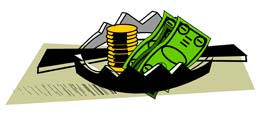Remember the S&L (savings & loan) crisis that necessitated a multi-billion-dollar taxpayer bailout? How about the near-meltdown of the Long Term Capital Management hedge fund? Or Caldor, Bradlees, and other retailers that filed for bankruptcy? The financial, retail and other markets are littered with the carcasses of failed firms, large and not-so-large companies that took big risks in search of big returns and flopped. But did they have to go under? "There is always a tradeoff between risk levels and expected rewards," says
In November, Hershey and two colleagues – deputy vice dean of Wharton’s MBA Program Anjani Jain, and Ziv Katalan, professor of operations and information management – gave a three-day executive education program in Decision Models for Management. The course covered a wide-ranging set of topics, including product mix decisions, applications of optimization models to operations management and marketing, portfolio optimization, yield management, and real options. In the wake of the electronic commerce revolution that has accompanied the Internet and other computer technology, simulation models in particular have become an increasingly important business tool.
Now, using a PC and a variety of spreadsheet-based simulation models, businesses in almost any kind of industry can establish supply and demand as well as other forecasts that assign the level of risk associated with a course of action.
While business owners have been making these kinds of estimates on an intuitive basis for generations, simulation models use historic data and sophisticated probability analyses to more accurately gauge levels of risk.
Risk has always been a part of the business landscape, from balancing manufacturing production with plant capacity and customer demand, to scheduling the most efficient distribution routes and delivery schedules. But now, as international barriers collapse and as capital flows electronically to its most efficient uses, factors like global competition and electronic commerce have pushed many companies into uncharted territory, increasing their risk exposure.
Merck & Co. is one example. To protect against a reduction in value of foreign currency cash flows, which account for approximately 25% of its revenues, the multinational pharmaceutical company instituted balance sheet and revenue hedging programs. These currency exchange strategies, which were at one time limited to financial institutions, let the company compare such choices as using "out-of-the-money" options, which are cheaper but offer less protection; or using forward contracts, which lock in today’s interest rates; or self-insurance, which keeps the risk with the company.
The widespread use of similar modeling systems was illustrated in an October 1995 Wharton survey that determined 38% of non-financial U.S.-based firms use derivatives. A derivative is a financial instrument (such as a future, option, or warrant) whose value derives from and is dependent on the value of an underlying asset. Derivatives are used to manage foreign exchange and interest rate exposure, as well as to control commodity price and equity risk.
While acknowledging their shortcomings, Jain points out that modeling systems enable businesses to assess the probable impact of a decision without incurring the time and expense of real-life experimentation. "Simulation modeling compresses the experimentation time to micro-seconds," he says. "Although uncertainty means you won’t reach an optimal solution, you can search out the ways a system will behave in response to your decisions."
Jain notes that applications include pricing securities, predicting likely consumer behavior, and analyzing the cash flow impact of a variety of decisions. Many systems are now offered for sale, including Banker’s Trust RAROC 2020 risk management system and Horizon, a web-based software tool for managing operational risk developed by J.P. Morgan and the Big Five accounting firm Ernst & Young.
The rise of the Internet and the tie-in to Point-of-Sale (which links computerized cash registers, scanners at distribution centers and a centralized computer in a retailer’s home office) and other technologies has made it easier for companies to access current and historical data, and share it between departments and business partners.
This information, ranging from the quantity of sales of sweaters by color, style and location, to changes in the price per barrel of crude oil, is fed into a simulation model, which uses the data to construct probability forecasts. Of course, as Katalan points out, the quality of the output is only as good as the quality of the input.
And that is an Achilles’ heel of simulation models. Ensuring that the data flowing downstream is good involves the timely transfer of huge amounts of accurate data. At Chase Manhattan, for example, every morning the senior vice president in charge of global risk management receives a 30-page report summarizing the bank’s Value at Risk (VaR). At global finance company J.P. Morgan, the company analyzes its global risk and summarizes it in a report that is sent to the chairman by 4:15 p.m. each day. This often requires extensive computer networks and reporting systems, which some companies see as simply being too expensive to implement, or returning benefits that do not outweigh the costs.
Companies that do make the investment in modeling systems, though, will often have an enhanced ability to measure, and consequently manage, risk. With this information in hand, they stand a better chance of succeeding in an increasingly competitive business environment.



